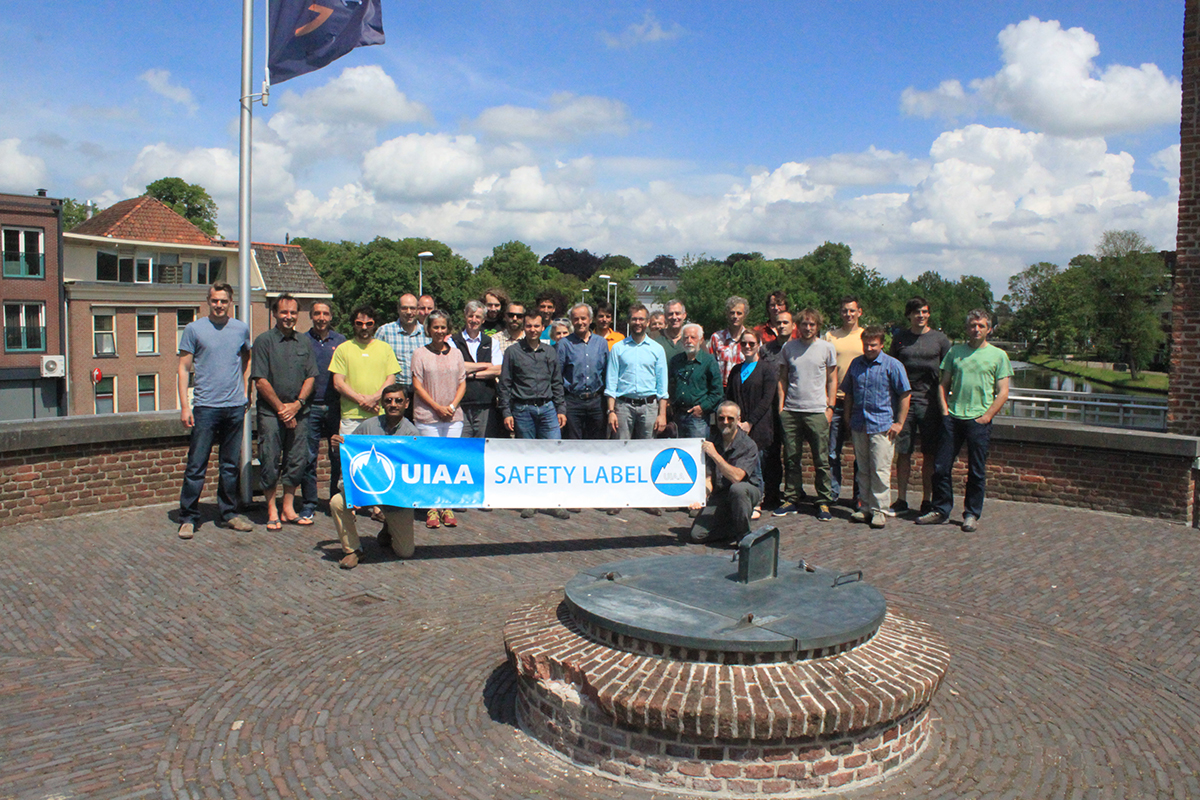The UIAA Safety Commission recently convened in Woerden, the Netherlands. Hosted by the NKBV – Royal Dutch Mountaineering and Climbing Club – the three-day annual meeting united UIAA Safety Commission members from national federations, representatives from manufacturers holding the UIAA Safety Label, together with delegates from UIAA accredited laboratories.
Among the subjects debated were the UIAA’s extensive work and research on anchor corrosion, the approval of a new UIAA standard dedicated to snow shovels, rim testing of helmets, and the drafting of a future standard dedicated to snow probes.
The 2017 meeting will be the last on chaired by current Commission President, Dave Custer (American Alpine Club). After five years in the role of president, Custer’s maximum term as delegate comes to an end in 2018. The new Commission President will be confirmed at the 2017 UIAA General Assembly in mid October.
The annual UIAA SafeCom meet is always a valuable forum for key stakeholders in the industry to exchange opinions and ideas and for the Commission to advance progress on core projects. Custer explains: “It’s a unique meeting. There isn’t another venue where this set of expertise all sits in the same room. For the climbing community such an event is important because this expertise is brought to bear.”

UIAA Safety Commission members come from four continents, bringing wide ranging experiences and skills. What unites them all is a passion for mountain activities and a commitment to ensuring climbing equipment found on the market performs to a baseline performance that a climber should expect of that equipment. “All the delegates are members of a mountaineering federation so we climb or once climbed,” continues Custer. “We all have technical backgrounds of all sorts, but it’s a range from materials to metals to different varieties of engineering.”
An extensive part of the Commission’s work is dedicated to the UIAA Safety Standards. Twenty-two UIAA standards currently exist and many have been revised periodically to adjust to the continuing evolution of the climbing and mountaineering world. The first, dedicated to ropes, was produced back in the 1960s. Others such as crash pads and snow pickets have been published by the Commission in recent years. Producing a Standard requires a significant amount of work. Custer reveals how one may come to life: “Ideally there would be a demand for a standard… it’s a case of what’s happening in the world of climbing and mountaineering whether it be equipment, techniques or relatively new climbing games like. We’d ask ‘do these new things create novel risk situations and how should those risk situations be dealt with?’.”
The UIAA Safety Label is truly global with equipment accredited on all continents. Today, different parts of the world face specific challenges, and in some areas the interest in and need for the UIAA Safety Label is on the rise—notably in Asia where the UIAA is in the process of accrediting new test laboratories. “There is a huge growth in Asian in terms of climbing as an activity,” reveals Custer. “Today (climbers in Asia) are in the situation that European or American climbers found themselves in decades ago. There is a huge growth yet the equipment they have access to is quite possibility absent of any indication of whether it is good or not. There is a lot of mystery stuff there.” In a word “mystery” highlights the need for the quality review provided by UIAA Safety Label. “The UIAA Safety Label provides another avenue other than word of mouth to permit people to go to a shop, look at the gear, and use it with the certainty that it will perform at a threshold appropriate for how the equipment is to be used.”

Decades ago, and when the UIAA put in place a dedicated Safety Commission, the testing of equipment was based on personal relationships, climbers testing equipment for each other and vouching for it. The world is now more sophisticated and rules more stringent. Custer continues: “The creation of the EU led to a unifying standards body for Europe and a legal basis for enforcement of those standards. In Europe, by law, for climbing and mountaineering equipment, there are legal implications and accountability to the system in place. One of our challenges is to go beyond Europe where this accountability is not so clearly defined.”

The UIAA currently counts some 66 label holders assigned to over 2,100 labels. For the manufacturers themselves it is important to be part of this network, one to support the UIAA as the global federation for climbing and mountaineering and two as Custer continues: “to access a globally recognised symbol that shows climbing equipment has been tested by a third party to show the design of equipment has performed to a baseline performance that a climber should expect of that equipment. From this, climbers can make a decision based on their own risk management preferences. Equipment standards provide one of the tools climbers need in order to make decisions about the risk they undertake when they go climbing.”
The next part of the UIAA’s dedicated series on mountain safety will be published in July with a focus on anchor corrosion produced in collaboration with Commission member Alan Jarvis.
Further Information:
UIAA Safety Label
UIAA Safety Standards



